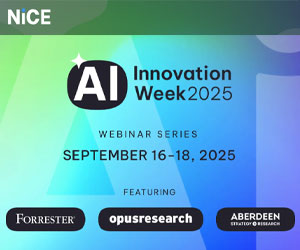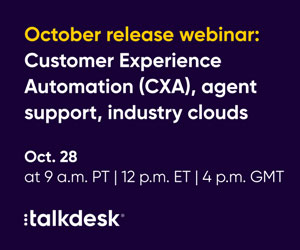Reg Dutton of EvaluAgent discusses the influence that developments in Artificial Intelligence (AI) are set to have on business process outsourcing (BPO).
Over the last few years, we have all witnessed the dramatic rise in the implementation of a vast array of new digital services across the contact centre sector.
To start with, there were the automated services such as interactive voice response (IVR), SMS updates, online customer reviews and robotic process automation. More recently we have seen the emergence of chatbots, whereby computers behave increasingly like humans.
There’s little doubt that machines are getting smarter by the day, and thousands of organisations across the world are now looking to leverage both automation and AI.
But BPOs beware. This almost obsessive focus on digital CX has some serious and potentially long-term repercussions.
Where digital CX fails to deliver
While automation and AI will deliver a series of short-term gains, they will quickly be followed by the realisation that technology simply doesn’t hold all the answers.
To start with, digital channels aided by the rise of the smartphone actually drive a lot of calls. (According to the Harvard Business Review, 57% of inbound calls come from customers who went to the website first).
Furthermore, while technology will undoubtedly make contact centres more productive by taking over the simpler, mundane tasks, when it fails or is unable to answer the more complex issues, it will be left to human agents to pick up the pieces and repair the customer relationship.
What this serves to demonstrate is that, ultimately, organisations will depend more on human creativity, the key element that will continue to form the backbone of a superior CX and a differentiated competitive advantage.
A positive caller experience wins customers over and increases conversions and customer acquisition rates, while promoting customer loyalty. By placing too much emphasis on cost-cutting digital CX, many BPOs could be missing the point; a far better measure of success is improving the key customer satisfaction metric, CSAT.
Now you’re really talking. Provide your clients’ customers with a great experience and not only will they love the organisation or brand, it will go a long way to making all their friends and family love it too.
BPOs, commoditisation and the purple cow effect
Even if a digital CX programme is successfully implemented, it will only serve to deliver standardisation across the sector. With most competitive advantages within the industry already commoditised, it should come as no surprise that delivering a superior customer experience is now regarded as the only way that an organisation can truly set itself apart from the competition.
How can your BPO possibly deliver your clients the competitive advantage based on a first-rate CX, when they all look and respond the same way as their competitors?
If you are in any doubt as to the validity of this argument, you only have to look to the retail sector to see how commoditisation led to a competitive difference based on price. The only companies that are now flourishing are those that have built a brand that offers a superior customer experience, such as Amazon, John Lewis or Waitrose.
How any self-respecting BPO can promote actions that lead to commoditisation is beyond reason, especially as they aren’t selling a product, they’re selling a service.
Many of you may also be familiar with the purple cow effect. You’re driving in the countryside, seeing normal cow after normal cow; then you see a purple cow. Suddenly you’re alert, you’re intrigued, and you’re more than likely going to investigate.
In the case of the contact centre, this purple cow will be human agents and human interaction, with its accompanying intuition, people skills, creativity, and complex problem-solving abilities.
Not only will consumers notice the difference, they are even willing to pay extra for such a service. A poll of over 2,000 adults by Harris found that 70% said they would be willing to pay more for a brand with a good customer service reputation. While 86% said they would very likely switch brands after a bad customer service experience.
Use contact centre technology to enhance, not replace, the role of human agents
By focusing too much attention and investment on automation and AI, once again contact centres will fail their employees.
The sector has been employing technology with increasing fervour since the beginning of the millennium, mostly in the form of performance metrics and workforce optimisation. But instead of empowering agents, it has simply become a large numeric stick with which to beat them.
With disengagement now at epidemic levels, it is essential that technology is used to enhance the role of agents, not simply to replace them.
Accenture, one of the world’s leading BPOs, has thrown its considerable weight behind the need to invest in people with a far-reaching white paper: Harnessing Revolution: Creating the future workforce. To quote from the introduction:
The good news: Leaders can build on a workforce that’s already highly engaged with digital and reshape their organizations to allow workers to flourish in a future augmented by new technologies in a way that drives real business value: productivity, talent acquisition and retention, as well as innovation and creativity.
The bad news: The clock is ticking. CEOs need to put people as the priority or risk leaving scores of workers, and their company’s competitive strength, behind.”
It’s time
The best way to offer a differentiated and superior CX is to use new technologies to engage employees and help them to progress. The question remains: how do you go about attracting and inspiring the next generation of super-agents who will deliver the level of CX demanded by customers?
With workforce optimisation increasingly failing, the answer to a brighter, more productive, more differentiated future lies ahead in the form of workforce engagement management.
Workforce engagement management is about creating the right workplace conditions so that agents can give their best every day, committed to their organisation’s goals and values, motivated to contribute to organisational success, while enjoying an enhanced sense of well-being.
Through workforce engagement management, contact centres can now introduce the management and motivational tools that will nurture a new generation of agent: engaged, informed, enthused and capable of delivering a first-class customer experience.
Race to the top, not to the bottom
Gartner has predicted that within the next few years, 89% of businesses will compete primarily on CX.
As a result, forward-thinking BPOs that want to lead the market and command a higher price need to start demonstrating that CX should be measured not in efficiency metrics but in the increase in first contact resolution (FCR) and customer satisfaction (CSAT).
Organisations look to BPOs not for a product, but for long-term solutions and differentiation in order to gain the competitive advantage. Focusing too heavily on automation and AI will simply lead to a race to the bottom with the commoditisation of the sector, the only comparison between BPOs being the price.

Reg Dutton
There’s no King Canute in this scenario. Not only are the machines here to stay, they will grow in number, with new ideas and advances increasingly encroaching on what were previously exclusively human-centric roles.
But by ignoring much-needed investment in people, BPOs are simply entering a race to the bottom. And they need to watch their step, because it’s a very long way down.
Author: Robyn Coppell
Published On: 26th Apr 2018 - Last modified: 14th Nov 2018
Read more about - Archived Content, EvaluAgent



























